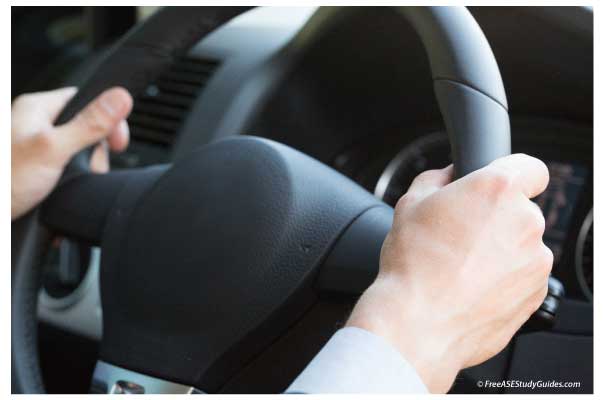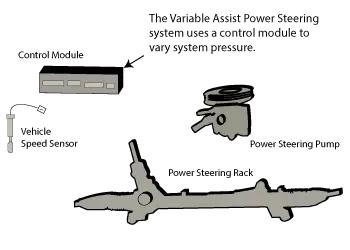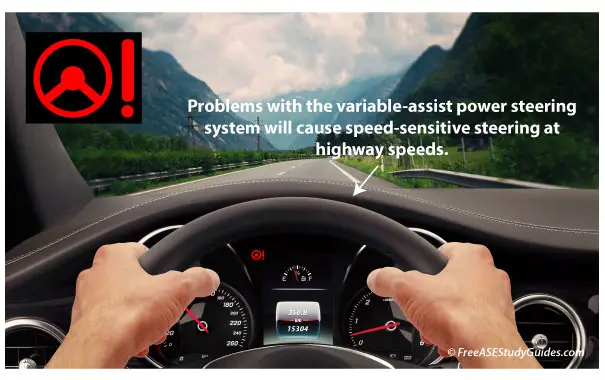Variable Assist Power Steering

Variable assist power steering systems provide maximum assist while parking and a firmer feel as vehicle speed increases and at highway speeds. There are different designs and names for these systems. They reduce the steering gear or rack pressure with vehicle speed.
The vehicle's wheel speed and steering wheel rotation sensors send the necessary signals to the control unit. Some vehicles have a dedicated unit, while others incorporate it into the traction and braking control units.

As vehicle speed increases, the control unit restricts fluid flow to the steering gear system. This action reduces the chance of a driver oversteering from a perceived threat on the road and gives the vehicle better stability.

There are different variable-rate steering systems; check the service manual before proceeding. Typically, the EVO actuator is NC or normally closed, blocking pressure from the bypass circuit and allowing full system pressure.
The control module uses PWM pulse width modulation to open the actuator/valve, dropping pressure at higher speeds. Disconnecting the actuator will provide full pressure.

When the variable assist system or actuator is not functioning correctly, it is not restricting fluid flow and pressure as vehicle speed increases, resulting in speed-sensitive sloppy steering at highway speeds.